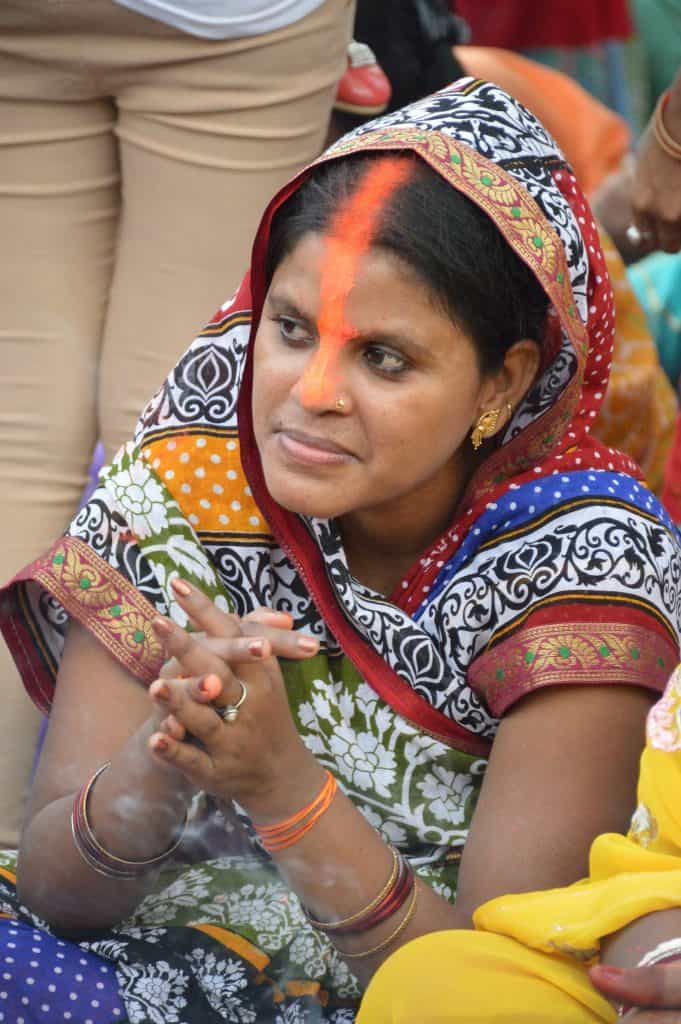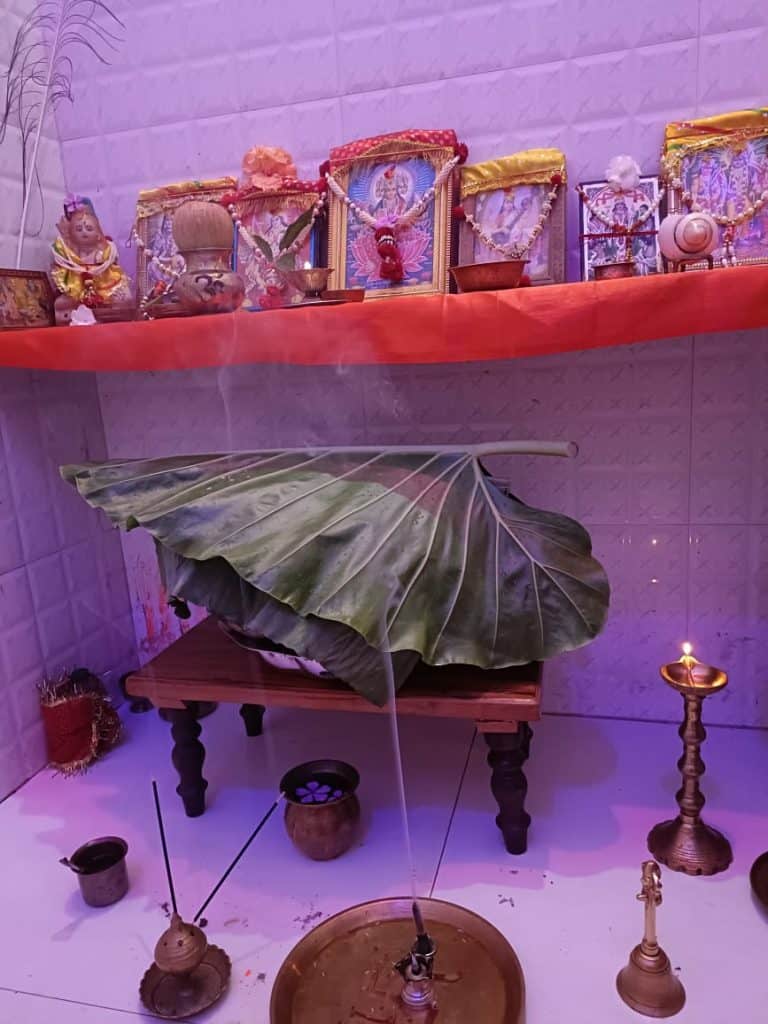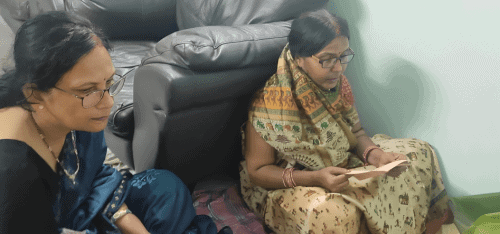While most of us are thinking about our next meal, supermoms are observing the Jitiya Fast proving that love, hope, and resilience are the ultimate fuel that feeds their devotion to their children’s well-being.

This is the mother-child bond – a bond so strong it transcends time and tradition. The Jitiya fast, observed by mothers across eastern India, is more than just a ritual—it’s a beautiful promise of protection and devotion to their children. As mothers go without food and water, they fast for their children’s well-being and carry forward an ancient legacy of love, hope, and resilience.,
Step into the world of Jitiya, where every prayer whispered and every dish prepared tells a story of maternal strength and the deep-rooted cultural significance that binds families together.
The Jitiya Fast transcends time and tradition
A mother’s fast is a timeless act of faith, where her hunger is transformed into blessings for her child’s well-being, the Jitiya Fast (Vrat) stands as the prime example of this devotion.
Primarily observed in eastern India( mainly in Bihar, Jharkhand and Uttar Pradesh) and Nepal, Jitiya Vrat also known as Jivitputrika, holds deep spiritual significance in Hinduism, especially among women. This sacred fasting ritual is dedicated to Lord Jimutvahana and is observed by mothers who pray for the long life and well-being of their children. Taking place during the month of Ashwin, the significance of Jivitputrika vrat jitiya embodies a mother’s unwavering love and selfless care.
By fasting from one day to another, women seek divine blessings for their children’s health, happiness, and prosperity. The vrat also honours the legend of Jimutvahana, who sacrificed his life to protect others, symbolizing the virtues of selflessness and maternal love. Through this ritual, Hindu women reaffirm their role as nurturers, invoking divine protection and guidance for their families.
How do mothers in different regions celebrate Jitiya?
Here’s how mothers across different regions celebrate Jitiya with their unique customs and rituals:
Tharu Community (Nepal): Tharu women celebrate Jitiya at their maternal homes, where they observe a strict nirjala fast (without water). They also participate in traditional dances and rituals, focusing on family ties and the support of their community.
Women celebrate the festival over three days, viewing Jitiya as a symbol of victory. They worship Lord Vishnu, Lord Shiva, and Lord Surya during the festivities, which are filled with traditional attire, music, and dance. A central aspect of the celebration is nature worship, which plays a key role in the Tharu community’s expression of victory. The Tharu people perform a special dance during Jitiya, known as ‘Zyamta.’
The community also has a unique water deity song called ‘Jatsari,’ sung in Brahmathan. Another traditional song, ‘Darkatoni,’ is sung by Tharu women after cutting branches from the peepal tree. These songs and dances are performed outdoors under the open sky during the Jitiya festival. As part of their rituals, the Tharu community cuts branches from the peepal tree and uproots rice plants, placing them in the center of the village in a spot known as ‘That.’
Bihar and Uttar Pradesh: The festival is a three-day affair. It begins with Nahai-Khai, where mothers prepare special vegetarian meals. On the second day, they undergo a rigorous fast, and on the third day, they break the fast with a festive meal filled with traditional dishes.
Jharkhand: In Jharkhand, Jitiya is celebrated over eight days. Mothers collect sand for special rituals and fast on designated days. As part of their prayers for their children’s safety, they offer food to jackals and eagles, which are believed to symbolize protection.
Despite the regional differences, all these celebrations showcase a mother’s unwavering devotion, with the shared goal of ensuring the health and prosperity of their children.
The Story Behind Jitiya Fast
The tradition of Jitiya traces its origins to an ancient Sanskrit play, Nagananda, written by King Harshavardhana of the Pushyabhuti dynasty in the 7th century CE. According to the legend, Jimutaketu, the king of the Vidyadhara mountains, had no son and prayed to a wishing tree for a child. Jimutvahana, a compassionate soul, was born and used the tree’s powers to bring wealth to the world. However, when rivals sought to fight for the throne, Jimutvahana chose peace and left his kingdom with his parents.
The family settled in the Malaya mountains, where Jimutvahana married Malayavati, the sister of Prince Siddha. One day, Jimutvahana saw a woman weeping for her son, Sankhachuda, a Naga who was to be sacrificed to Garuda as part of an ancient pact. To save him, Jimutvahana offered himself in place of Sankhachuda and lay on the rock of death. As Garuda began eating him, flowers rained from heaven, and Garuda realized the nobility of Jimutvahana’s sacrifice.
Filled with guilt, Garuda promised to stop killing snakes. He then brought nectar from heaven to heal Jimutvahana and revive the serpents. Goddess Gauri blessed Jimutvahana, and the Nagas, along with his family, praised him. Jimutvahana then returned to reign as the king of the Vidyadharas. His selfless act of sacrificing his life for others is seen as the epitome of compassion, and mothers pray to him for their children’s protection and longevity.
Leaf for Life
In the Jitiya fast, various leaves play an important symbolic and spiritual role. These leaves are offered to the deity as a sign of devotion and are used to invoke blessings for the children’s well-being. Some of the key leaves used in Jitiya rituals include:

- Aparajita Leaves (Clitoria ternatea): Signifying strength, victory, and protection, aparajita leaves are offered to pray for children’s invincibility and resilience.
- Tulsi Leaves (Holy Basil): Revered for its purifying and protective qualities, tulsi represents devotion and spiritual upliftment, believed to bring divine protection to children.
- Bamboo Leaves: Symbolizing longevity, resilience, and strength, bamboo leaves represent a mother’s wish for her children to grow strong and healthy.
- Belpatra Leaves (Bilva Leaves): Traditionally offered to Lord Shiva, belpatra leaves signify spiritual growth, health, and protection.
- Banana Leaves: Used to symbolize simplicity and nourishment, banana leaves are believed to ensure children’s prosperity and well-being.
Rituals of Jitiya Fast
Day 1: Nahai-Khai (Purification Day)
The first day of Jitiya Parv is called Nahai-Khai, meaning “bath and eat.” On this day, mothers take a holy bath early in the morning in rivers or ponds, marking the beginning of the rituals. They consume food only once a day, typically vegetarian meals prepared without onions or garlic. Traditional foods like arvi (taro root), ridge gourd (jingli), cucumber, noni ka saag (wild greens), mandua (finger millet), and desi peas (kushi kerav) are eaten. The meal is considered sacred and is consumed after offerings are made to the deities.
Day 2: Khur Jitiya (The Day of Fasting)
The second day, known as Khur Jitiya, is the most important day of the festival. Mothers observe a strict fast, abstaining from food and water for 24 hours. This fast is carried out with deep devotion, accompanied by prayers and hymns dedicated to Lord Jimutvahana. Women gather at temples or in their homes, offering prayers and singing traditional songs that recount Jimutvahana’s sacrifice. Offerings of vermilion, flowers, fruits, and aparajita are made, and the women spend the night reciting the Jitiya Vrat Katha and in prayer and devotion.

Day 3: Parana (Breaking the Fast)
On the final day, known as Parana, the fast is broken after performing prayers and rituals. Offerings are made to Jimutvahana, and mothers end their fast with a simple meal. Traditional sweets like thekua (a sweet made of wheat flour and jaggery) are prepared and shared with family members, marking the successful completion of their prayers for their children’s well-being.
The Jitiya fast is thus a powerful expression of a mother’s unconditional love and selfless devotion to her children’s well-being. Through this sacred ritual, mothers seek divine blessings for the long life, health, and prosperity of their offspring, reaffirming their nurturing role and the profound spiritual significance of this ancient tradition.
What are the traditional foods prepared during Jitiya in Uttar Pradesh and Bihar?
During the Jitiya festival in Uttar Pradesh and Bihar, mothers cook up a range of traditional dishes, especially on the first and third days of the celebration. Here’s a glimpse into the delicious spread:
- Madua (Ragi): A nutrient-rich millet used to make rotis, halwa, and laddoos, adding both flavour and tradition to the festival.
- Noni Saag: A leafy green dish, cooked simply without onion or garlic, often paired with Madua rotis for a wholesome meal.
- Kushi Kerao: Dried peas turned into a comforting dal or curry, typically enjoyed after breaking the fast.
- Poro Saag: Also known as Poi Saag, this green is cooked into a dry curry and served alongside Kushi Kerao for a healthy combo.
- Satputiya: Small gourds prepared in a light curry, perfect for a humble yet flavorful meal.
- Pirukiya: Think of these as festive sweet dumplings, filled with coconut and jaggery, then deep-fried until golden—an irresistible treat!
- Thekua: A sweet cookie made from wheat flour and jaggery, with a hint of cardamom, deep-fried to create a crispy bite-sized delight.
- Pakoda: Crispy, golden fritters made from seasonal vegetables, perfect for snacking after the fast.
- In the Mithilanchal region, (part Nepal and adjoining Bihar) popular dishes include ‘Jhor Bhat,’ which is a vegetable soup with simple rice, as well as ‘Noniko Saag’ (a type of leafy green) and ‘Maduwa’ (bread made from finger millet).
Jivitputrika Vrat 2024 Date: Jivitputrika Vrat to be observed on September 25, 2024.
Read more: Discover Your India



